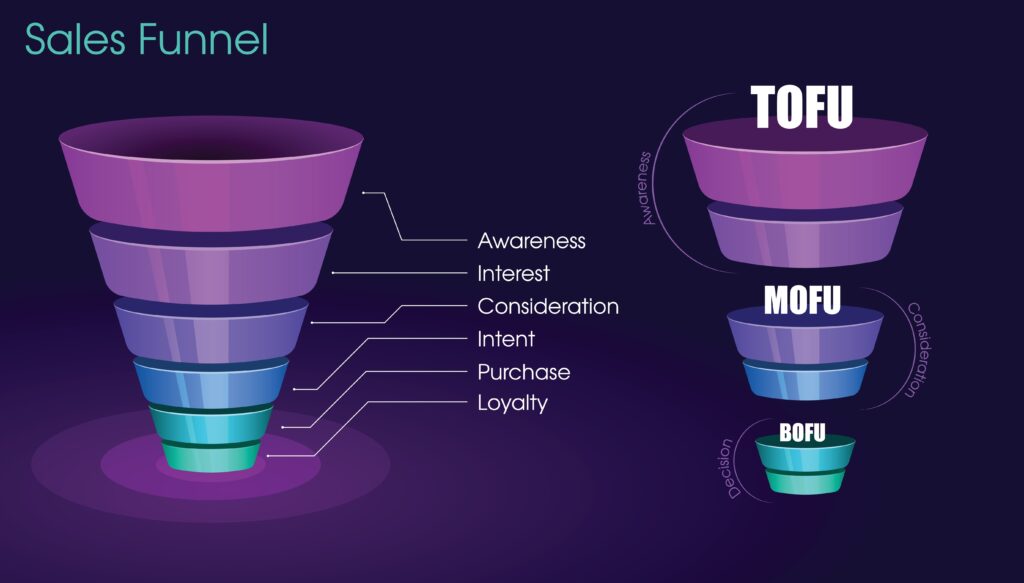Lead generation is merely the initial phase in constructing a thriving sales funnel. Unlock the full potential of your marketing strategy by mastering the art of lead nurturing. Boost your conversions and revenue like a pro! Maximise your sales potential with our proven lead nurturing strategies. Our approach ensures that your prospects are expertly guided through the sales funnel, resulting in a loyal customer base that will drive your business forward. Discover the ultimate guide to lead nurturing! Uncover the foundations and best practices of this crucial process.
Understanding Lead Nurturing
Lead nurturing refers to the process of building relationships with potential customers at every stage of their buyer’s journey. It involves providing valuable and relevant content, addressing their pain points, and guiding them towards a purchasing decision. By nurturing leads, you establish trust, showcase your expertise, and increase the likelihood of conversion.

Who Should Be Nurtured?
Every lead you generate is a potential opportunity for your business. However, not all leads are equal, and prioritizing the right ones is crucial. Here are three primary categories of leads that warrant nurturing:
Marketing Qualified Leads (MQLs)
MQLs have shown interest in your offerings and are more likely to convert compared to other leads. They have engaged with your content, filled out forms, or downloaded resources, indicating they are researching solutions for a potential project they have coming up. These leads, we can assume are in the awareness phase of their buyer’s journey.
Sales Qualified Leads (SQLs)
SQLs are leads that Sales teams have accepted and identified as having the potential for a sales conversation. These leads may have met specific criteria set by the Sales team, such as budget, authority, need, and timing (BANT).
Opportunities Lost or Stalled
Leads that previously expressed interest but didn’t convert or those that went cold can still be nurtured. It’s essential to re-engage them by offering new insights, addressing their concerns, or providing updated solutions. One of the most common reasons a deal doesn’t close is due to timing. This does not mean that the lead has no future opportunity to progress, so throwing them in the bin and forgetting about them would be doing you a huge disservice in all the hard work that went into generating them.
Why Is Lead Nurturing Important?
Effective lead nurturing is a cornerstone of successful demand generation strategies for technology companies. Here are some key reasons why lead nurturing is vital for marketing professionals:
Increased Conversion Rates
Findings by Forrester shows, businesses that excel at lead nurturing generate 50% more sales-ready leads at a 33% lower cost. Nurtured leads are more likely to convert into paying customers due to the trust and credibility built throughout the nurturing process.
Enhanced Customer Experience
Lead nurturing allows you to personalize and tailor your messaging based on your prospect’s specific needs and pain points. By providing relevant and valuable content, you create a positive customer experience, reinforcing your brand’s credibility and thought leadership.
Shortened Sales Cycles
Nurtured leads are more educated about your product, service offering and value proposition, making them better prepared for the sales conversation. This knowledge may reduce the sales cycle length, allowing your Sales team to focus on more qualified leads.
Increased Customer Lifetime Value (CLV)
Lead nurturing doesn’t stop at the point of sale. By continuously engaging and delighting customers post-purchase, you increase their CLV. Satisfied customers are more likely to become repeat buyers, refer your company to others, and engage in upsell opportunities.

When to Implement Lead Nurturing?
Effective lead nurturing requires strategic timing and tailored messaging. Here are the stages of the sales funnel and how you can nurture leads at each stage:
Top of the Funnel (ToFu)
At the awareness stage, prospects are seeking information and solutions to their pain points. Nurture these leads by providing educational content such as blog posts, whitepapers, eBooks, or webinars. Offer industry insights and best practices to establish credibility and position your company as a trusted resource.
Middle of the Funnel (MoFu)
During the consideration stage, prospects have identified their challenges and are evaluating potential solutions. Nurture these leads by providing case studies to showcase how you have helped other organisations, especially if they are direct competitors.
We know that The Jones Theory is one of the Impulse Factors in sales, everyone wants to know what their competition are doing, so they can “keep up with the Jones’”. Other recommended resources include product demos, comparison guides, or expert analysis.
Address their specific pain points and showcase how your offering can meet their needs effectively.
Bottom of the Funnel (BoFu)
At the decision stage, prospects are ready to make a purchase decision. Nurture these leads by offering personalized consultations, free trials, pricing quotes, or testimonials. Focus on demonstrating the value of your product or service, providing proof of success, and addressing any remaining objections or concerns.
Best Practices for Effective Lead Nurturing:
To achieve optimal results, follow these best practices when implementing lead nurturing strategies:
Segment Your Audience
Segmentation allows you to deliver personalized content tailored to the unique needs and preferences of different leads. Divide your leads based on demographics, firmographics, behaviour, or their stage in the sales funnel. This approach enables targeted messaging, increasing engagement and conversions.
Use Marketing Automation
Leverage marketing automation tools to streamline and scale your lead nurturing efforts. These tools enable you to automate personalized messaging, track engagement, and analyse data for continuous improvement. By automating repetitive tasks, you can focus on high-value activities, such as crafting compelling content.
Personalise Your Communication
Generic, one-size-fits-all messaging is no longer effective. Personalise your communication to resonate with each lead. Use their name, reference their pain points, and provide tailored recommendations.
Personalisation shows that you understand their specific challenges and positions you as a trusted advisor.
Provide Valuable Content
Content is the backbone of successful lead nurturing. Create a variety of content formats, such as blog posts, videos, infographics, or podcasts, to cater to different learning preferences. Ensure your content is informative, educational, and addresses common challenges you know your solution directly matches.
Monitor and Analyse
Regularly monitor and analyse the performance of your lead nurturing campaigns. Track key metrics such as open rates, click-through rates, conversion rates, and customer lifetime value. Use A/B testing to optimize subject lines, email copy, and calls to action. Data-driven insights will guide you in refining your strategies and increasing your success rate.
Conclusion
Lead nurturing is an indispensable strategy for Marketing professionals seeking to maximize their lead-to-customer conversion rates. By understanding your leads, implementing best practices, and tailoring your messaging to each stage of the Sales funnel, you can build strong relationships and guide prospects towards becoming loyal customers.
Remember to continually refine your approach through data analysis and stay up-to-date with industry trends to maintain a competitive edge.
Happy nurturing!











